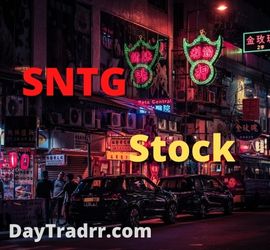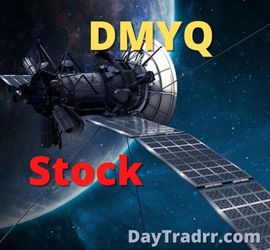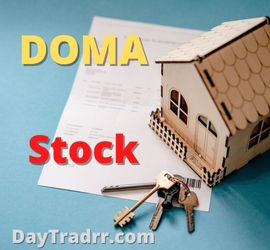After Hours Trading – Who is Allowed to Trade After Hours?
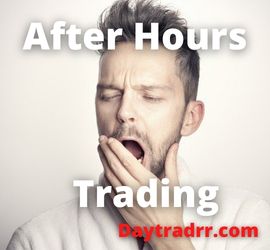 After-hours trading, or extended hours trading refers to the time outside regular trading hours when an investor can buy and sell securities.
After-hours trading, or extended hours trading refers to the time outside regular trading hours when an investor can buy and sell securities.
The main trading session for most stock markets occurs throughout the day. A trading session is the period of time during which trading activity takes place. One session represents a single day of operations. The opening bell signifies that the market is open for business and the start of the session. Similarly, the trading day concludes with the sound of the closing bell. The majority of transactions occur between the opening bell and the closing bell. However, trade activity is not only limited to this timeframe. It does, in fact, occur after the market closes, after normal business hours have concluded. This is referred to as the after-hours trading session. However, there are some significant changes between the regular day and the after-hours activity.
What Is After Hours Trading?
After-hours trading refers to the time after the market closes. However, investors can still purchase and sell assets outside of regular trading hours. The New York Stock Exchange (NYSE) and the Nasdaq are both open from 9:30 a.m. to 4:00 p.m. Eastern Time. Nevertheless, trades can be completed between 4:00 p.m. and 8:00 p.m. Eastern Standard Time during the after-hours session. Electronic communication networks (ECNs) link potential buyers and sellers during these trading sessions. As a result, there is no need for a traditional stock market to conduct this activity.
During the after-hours trading session, trading volume is often low. This is due to the fact that there are normally very few active traders during this time period. Occasionally, traffic and activity can increase if major economic news or information about a company is released. Still, traders can expect wider spreads (the gap between bid and ask prices) and lower volume during off-hours.
After Hours Trading – Electronic Communication Network (ECN)
After-hours trading was used primarily by institutional investors up until mid-1999. Then, the services of ECNs became more widely available to retail investors. ECN stands for Electronic Communication Network. An ECN is a computerized system that directly publishes orders placed by market participants to third parties and individual traders. Those orders are then executed automatically by matching purchase and sell orders at the best available price. ECN trading is a highly efficient procedure that employs cutting-edge technology. An ECN allows individual investors to interact electronically. It also allows large institutional investors to interact anonymously, concealing their actions. Investors have welcomed extended trading as it has grown in popularity over the last decade. In fact, a growing number of brokers now provide after-hours trading.
Trading in U.S. stocks outside of regular market hours is not a new phenomenon. For years, institutional investors and market professionals have sent their after-hours orders to broker-dealers for execution on ECNs or non-U.S. markets. These market participants traditionally have been willing to accept the risks of trading outside of regular market hours, including the potential price volatility and lack of liquidity, because they operate sophisticated worldwide trading strategies that require them to make 24-hour adjustments to their portfolios and risk containment hedges. Moreover, many of these institutions avoid market risks by negotiating the execution prices of their after-hours trades beforehand. (Source: sec.gov)
Post-Market and Pre-Market Trading
After-hours trading is broken into two periods of the day. The first is the trading session following the close of the market. Post-market trading is often conducted between 4:00 p.m. and 8:00 p.m. on most exchanges. You can also participate in pre-market trading, which occurs in the morning before the markets open (before 9:30 a.m.). The particular exchange determines when the pre-market session begins.
The OTC Market (over-the-counter), is where the smallest market capitalization securities are traded from 9:30 a.m. to 4:00 p.m. However, there are extended hours from 6:00 a.m. to 9:30 a.m. and then again from 4:00 p.m. to 5:00 p.m. International market hours vary by location. Several markets in other nations, such as the Tokyo Stock Exchange, have a lunch break.
What is Different about After Hours Trading?
Extended hours trades occur in an electronic market or ECN. Individual buy and sell orders are matched by a computer algorithm rather than a market maker or exchange official. In normal day sessions, traders expect to be able to fill all but the largest orders during regular market hours. They expect to do this without having to change their specified price to buy or sell stock. This is known as market liquidity. Market makers and high-frequency trading funds are less likely to participate in extended-hours trading. This is because the largest investors, hedge funds, and mutual funds are unlikely to be trading. Because of the illiquid nature of extended-hours trading, traders may have to change the price they offer to purchase or sell stock. This can be necessary in order to find someone to accept the other side of their trade with limited liquidity.
After Hours Trading – Benefits
After-hours trading comes with some possible benefits:
- Up-to-the-minute information: Off-peak sessions allow investors to trade new information released after the closure of the regular trading day. The information may have a sharp, but short-term impact. This allows off-peak traders to respond rapidly before the following trading session. For example, many corporations report earnings after the regular session has ended. Extended hours allow traders to quickly manage their positions rather than waiting until the next day’s open. It can be the difference between a quick profit or potentially missing significant price fluctuations.
- Accessibility – Due to their schedules, some traders are simply unable to place trades during the regular session. Extended sessions allow them to review the current quotes and potentially place a deal at a more opportune time. Some investors may prefer to trade at off-peak hours, and extended hours allow them to do so. Significant news events, such as company results releases, may be reported outside of usual trade hours during off-peak times. Traders can then use this information to trade instantly rather than waiting until the next day.
Risks and Dangers
- Liquidity and volume – During regular business hours, there are significantly more buyers and sellers. Also, there may be less trading volume during off-peak hours. As a result, it may be more difficult to complete a trade or convert shares to cash. The vast majority of deals take place during conventional trading hours. This translates into stronger supply and demand for stocks that investors wish to trade. Trading at non-peak hours is oftentimes characterized by a lack of liquidity.
- Uncertain prices with wider spreads – The quotes you see during the normal session are consolidated and represent the best available rates across all trading venues. In the after-hours market, however, you may only see prices from one venue. This may differ from the prices posted in other electronic trading systems for the same securities. In addition, the lesser trading volume may result in a wider spread between the bid and ask prices. As a result, it may be difficult for an individual to have his or her order performed at a reasonable price.
- Competing with institutional investors – While private investors can now trade in the after-hours market. However, they must compete with large institutional investors that have access to more resources than the average individual investor. As a result, individual investors may be at a disadvantage. They are up against major investors with large sums of money to invest. Moreover, they tend to be expert traders who are better at completing transactions than most ordinary investors.
- Volatility: In comparison to regular exchange hours, the after-hours market is quite thinly traded. As a result, after-hours are more likely to result in dramatic price swings than regular hours. Because the activity is typically minimal, price volatility may be greater than during regular exchange sessions.
Market Hours Schedule
NYSE
- Pre-opening: Monday through Friday, 6:30 a.m. ET
- Early session: Monday through Friday, 7:00 a.m. ET to 9:30 a.m. ET
- Standard session: Monday through Friday, 9:30 a.m. to 4:00 p.m. ET
NYSE American Equities, NYSE Chicago, NYSE National
- Pre-opening: Monday through Friday, 6:30 a.m. ET
- Early session: Monday through Friday, 7:00 a.m. ET to 9:30 a.m. ET
- Standard session: Monday through Friday, 9:30 a.m. to 4:00 p.m. ET
- Late session: Monday through Friday, 4:00 p.m. to 8:00 p.m. ET
NASDAQ Stock Exchange
- Early session: Monday through Friday, 4:00 a.m. to 9:30 a.m. ET
- Standard session: Monday through Friday, 9:30 a.m. to 4:00 p.m. ET
- Late session: Monday through Friday, 4:00 p.m. to 8:00 p.m. ET2
U.S. Stock Exchange Shortened Trading Days
The U.S. stock exchanges have shortened days and close early on the following days:
- Black Friday (the day after Thanksgiving): 9:30 a.m. through 1:00 p.m. ET
- Christmas Eve: 9:30 a.m. through 1:00 p.m. ET
(Source: nyse.com & nasdaq.com)
Up Next: What Does Y2K Mean?
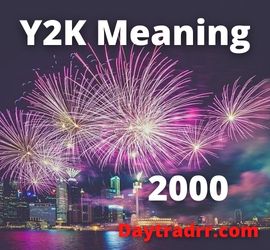 Y2K is an acronym for the year 2000. In the late 1990s, there was serious concern that potential computer errors would occur related to the computer formatting of calendar dates.
Y2K is an acronym for the year 2000. In the late 1990s, there was serious concern that potential computer errors would occur related to the computer formatting of calendar dates.
The fear of Y2K was in response to a prevalent computer programming shortcut. Many computer programs only permitted two digits to designate the year. For example 99 instead of the more complete 1999. As the millennium approached, there was widespread concern for potential mayhem as the date changed from 1999 to 2000. The concern was that computers would be unable to function when the date changed, possibly interpreting 00 to be the year 1900 instead of 2000. Computer experts and financial analysts worried that the transition would disrupt computer systems ranging from airline bookings to financial databases to government services.

